Grandville Landsdell
Dancing By the Light
of Paper Lanterns

The blockbuster movie “Dirty Dancing,” was set in an early 1960s Catskill vacation resort. It has been 36 years since the film’s premiere at the Cannes Film Festival in May 1987, and, as is so often the case, no one remembers who the director, producer, or scriptwriter was. “Dirty Dancing” opened in America in August and the lines at box-offices across the country were long. If you saw the movie, you are one of the millions who will never forget the finale in which Patrick Swayze and Jennifer Grey danced, in the season ending performance before a standing-room-only audience, to the song (I’ve had) the Time of My Life.
The soundtrack of the movie was a virtual catalog of music from the era. Twenty different songs were included in the album by noteworthy songwriters like Frankie Valli, Otis Redding, Bruce Channel, Merry Clayton, and Bill Medley. Among the others was Patrick Swayze’s own, She’s Like the Wind, a song that became the theme music of millions of young men with a dream of being Johnny Castle as he drove away from the parking lot of Kellerman’s Resort in his 1957, black Chevrolet V-8.
***
It would be easy to assume that Max Kellerman would be insulted if someone referred to his establishment as a barn, but we need to call his Catskill resort by a name with which we are familiar.
***
An early piece of art history – a painting by Pieter Breughel the Younger – entitled, Wedding Dance in a Barn is dated 1620. The painting is approximately 41 inches by 32 inches and since 1928 has hung in the National Gallery of Ireland in Merrion Square, in Dublin. The picture shows several couples, of all ages dancing while other guests are busy at the keg or picking at a plate of food.
The title of Breughel’s painting is the first known use of the term barn dance. Since then, a barn dance is an event involving traditional music to which traditional dances can be done. Today, it is a rare occasion that a dance is held in a barn. Today village centers, grange halls or high school gymnasiums are safer and cleaner. Such events are often connected to annual family or community gatherings to which even those who find dancing difficult or frivolous are invited and can participate. There is always a fiddler (but today he is replaced by a disc jockey with a stereo system) and a caller who will announce the dances and sing out all the necessary steps and motions.
If you went to elementary school in the same decade as I did – the 1950s – certainly your fourth-grade teacher taught you to square dance. It was part of the America’s History curriculum. The boys hated it; the girls loved it. As I remember boys didn’t like touching girls, let alone holding their hands.
It’s been hard to forget how much I hated square-dancing – I can’t say that I wake up at night with “Allemande Left” or “Allemande Right” ringing in my ears, but the words “Balance,” “Opposite,” “Set,” and “Promenade” send chills down my spine.
***
Decades before Johnny Castle wooed Frances “Baby” Houseman to the stage at Kellerman’s, there were barns across America that were decorated each weekend or at least several times a year for dances that were announced in local newspapers with the poem, Come and Enter Into Country Joys.
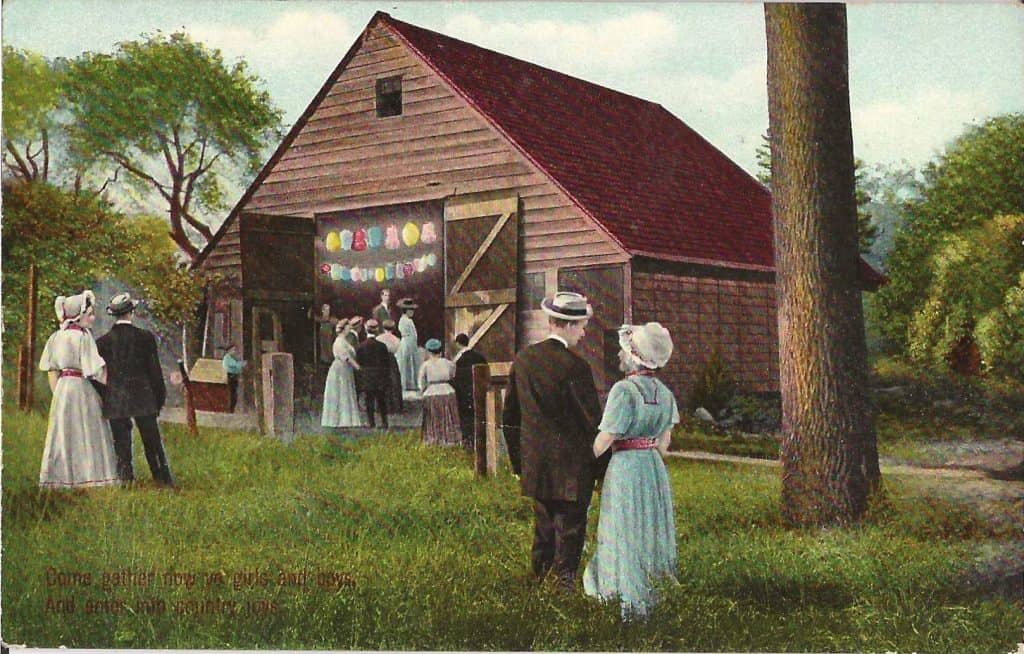
And enter into country joys.
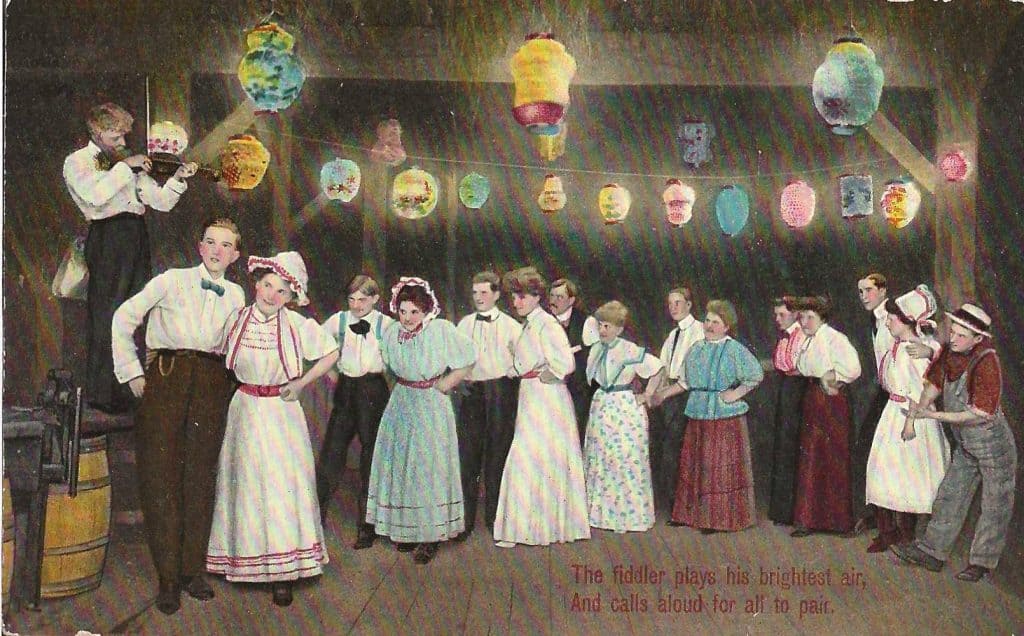
And calls aloud for all to pair.
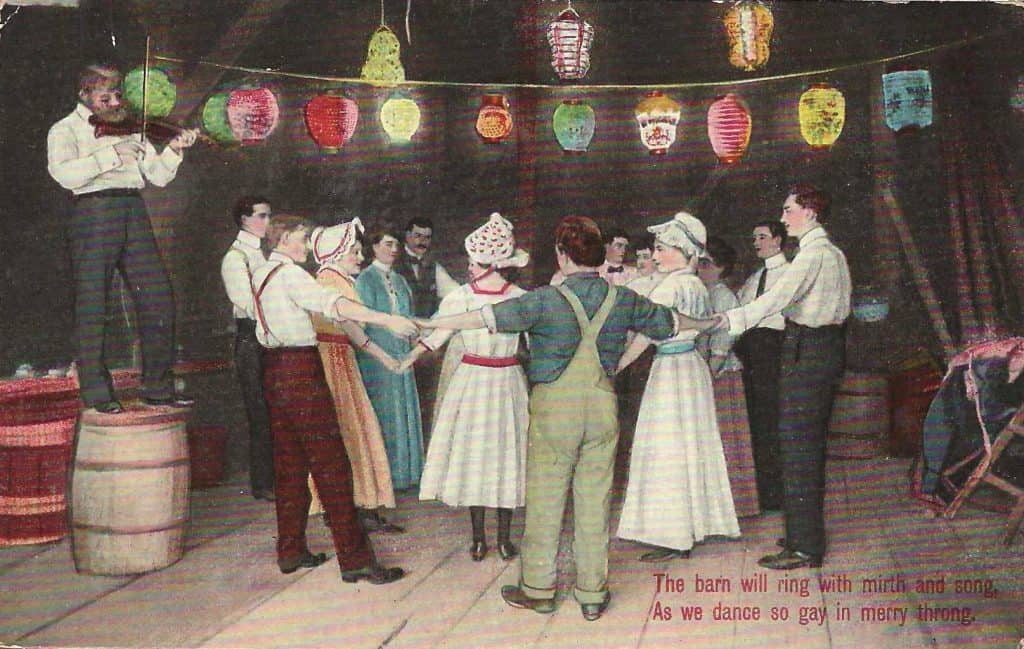
As we dance so gay in merry throng.
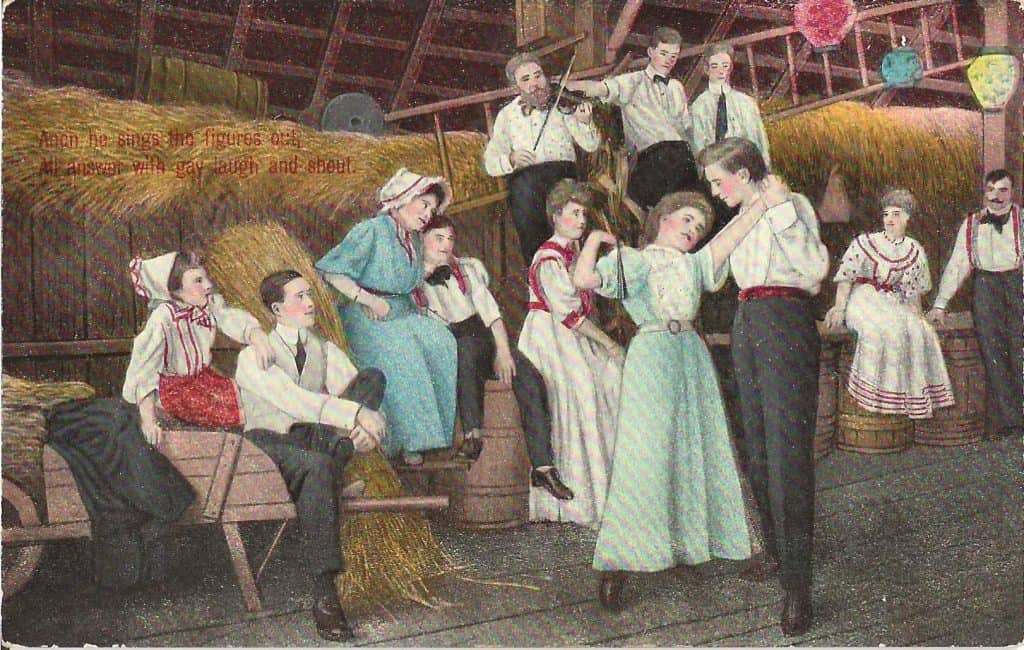
All answer with gay laugh and shout.
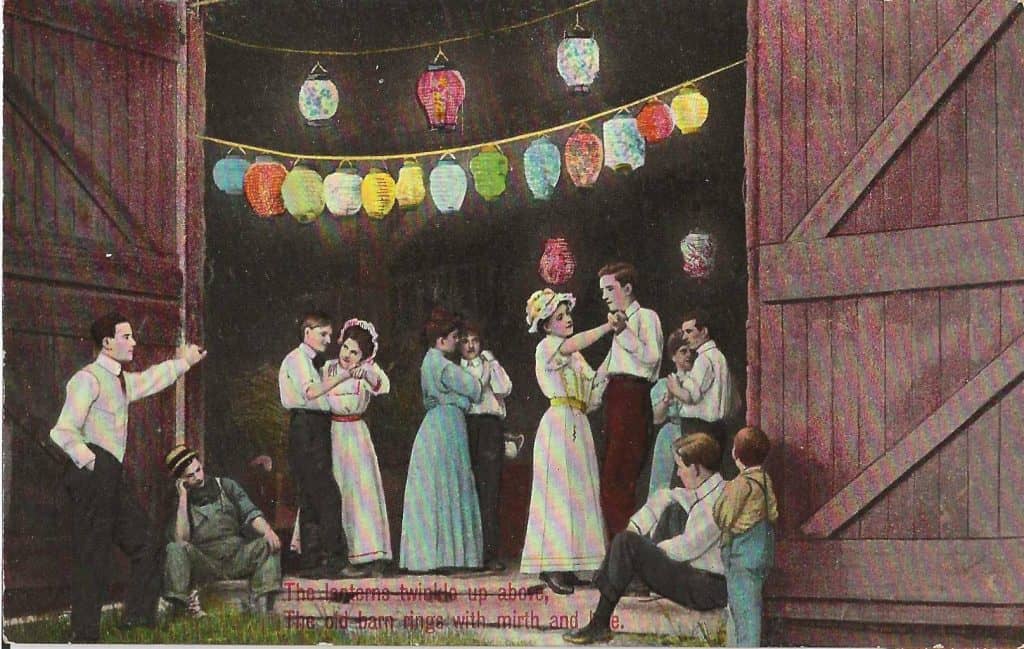
The old barn rings with mirth and love.
***
The poem has often been called an ancient Irish lilt, but it has enjoyed attributions to at least six of the English world’s most accomplished practitioners, including Shakespeare and Lord Byron.
Square dancing was taught in gym class when I went to elementary school in the 1960’s. In a vain attempt to get the boys to stop complaining about the lessons, the teacher told us that legendary football coach Knute Rockne had insisted his players engage in the activity.
Same here! Square dancing was taught in gym class and we heard the Knute Rockne story, too! If square dancing was so good for you, why didn’t our gym teachers ever participate? 🤔
Having to do square dancing was still a thing in the 70’s when I was in Junior High. I didn’t care much for it, but it did give me a chance to dance with a girl that I liked. The colorful paper lanterns are a pleasing part of the postcards shown here.